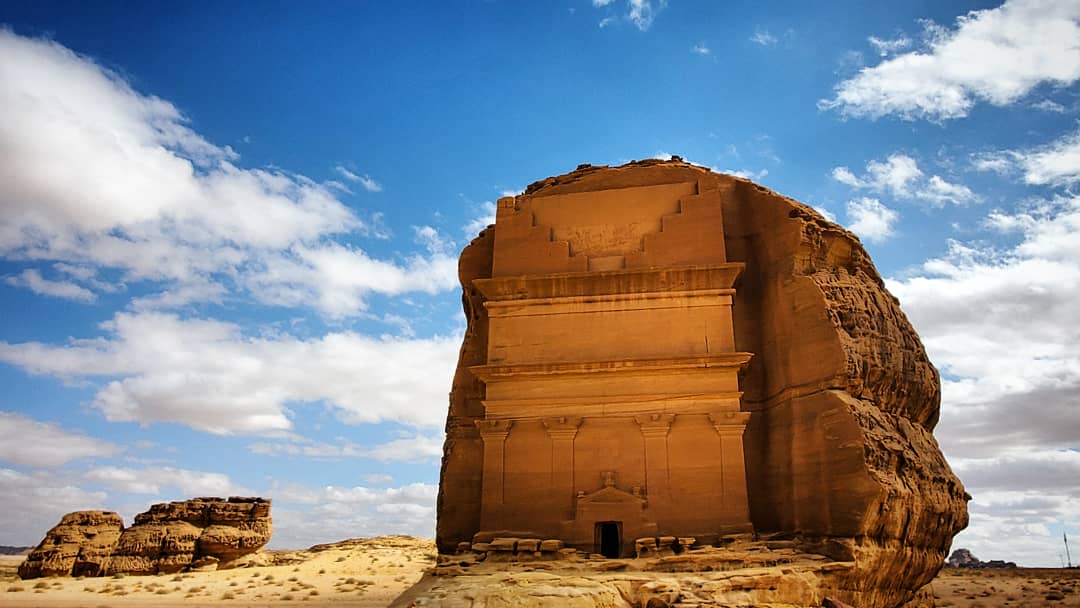Editor’s Note: This article was previously published but with a major part of the story missing. It has been re-published in its entirety so that you can enjoy the whole story. We apologize for this oversight.
“Americans?”
“Yep”
“Camels! Coffee! You come!”
With a big wave of his arm, and that limited exchange, my friends and I found ourselves following a total stranger, in his 75-Series Land Cruiser, into the sea of dunes covering Northeastern Saudi Arabia in our ill-prepared rental car with no idea where we were headed and whether we’d even make it. But before I get to that, let me take a step back to explain how we got there.
The decision to travel to Saudi Arabia is a controversial one. Many people told me so to my face and on social media. I understand others’ concerns, but my approach to travel, whether it’s local or global, is that I don’t judge an entire nation or group of people based upon the actions of a few, be they private citizens or public officials. If I want to know about a culture, a country, or it’s people, I go there and learn firsthand as much as language and social mores allow.
Until October of 2019, a religious, familial, or professional invitation was required to enter Saudi Arabia for most visitors. That process has now improved significantly for many countries’ passport holders. I’m not going to go into all the subtleties of who can, and how to get a visa, but for US Citizens, that process now takes $125 and about 10 mins at visitsaudi.com.
Back in January of 2019, my friend Kurt Williams and I attended the 2019 Dakar Rally in Peru with a couple of friends. It was my third and his fourth visit to Peru, which we both love, but the takeaway is that we came home hooked on Dakar. Rumors soon began to circulate that Dakar would be moving back to Africa, or the Middle East for 2020. In April, it was officially announced Saudi Arabia would host the rally. After doing our research and a few conversations, we both decided that not only was Saudi a place we both really wanted to visit, but that we could find a way to use Dakar for an invite/visa. With no real idea of how that would happen, we moved forward with plans to go. We closely monitored flights, rental cars, political turmoil in the Middle East etc., and a month prior to the Baja 1000, we started our visa paperwork with plans to send our passports to the Saudi Arabia embassy in DC, along with letters requesting permission to visit for the rally, immediately after returning from Mexico in late November. We extended an invite to a close group of friends to let them know we were going and that they were welcome to join in our adventure. During the following week of discussions, Saudi changed the visa process. Within a week of that change, the two of us, plus our friends Marc and Bryan, had our visas and flights booked. Our plan was simple: rent a 4WD, follow the rally for five or six days, then see what we could of the other parts of the country for a few more, then fly home. For the most part, it went as planned, with one major exception.

We arrived in the coastal city of Jeddah just after sunset on January 3, only to discover that the Hertz airport rental was actually in the city and had five different locations. The first location was not ours, despite our taxi driver’s confidence. We then showed up at a second location, and our rental was indeed there. However, “We are all sold out of Toyota Prados, here is a Mazda CX-9” is how we were greeted. Street tires and AWD are not the same as a Prado. It was also small; we had four guys with camping gear for 10 days. It was cozy but doable for mild off-roading and exploration. Not ideal, but we made it work. We were definitely limited on where we could explore, but with a country that has so much to offer, there was plenty we could see.
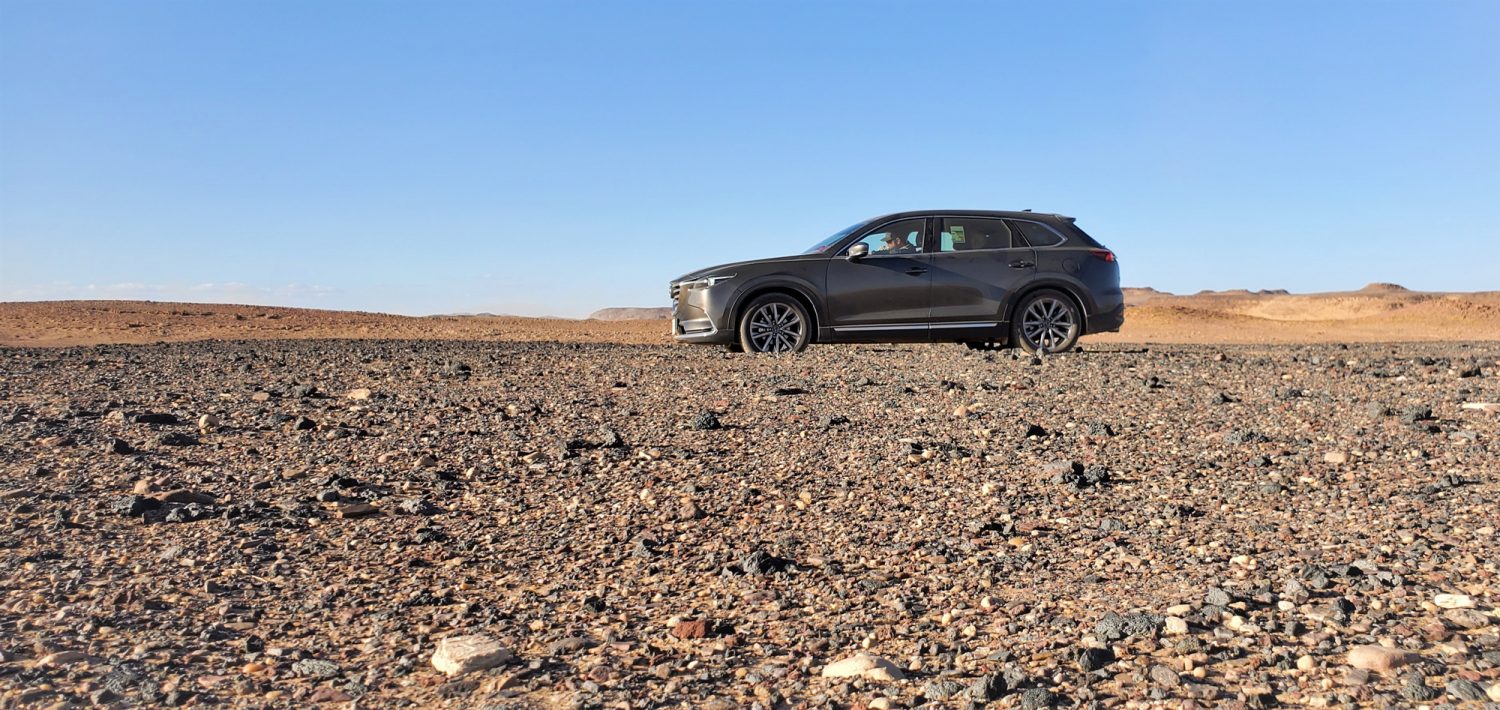
I’d been to Jordan a few years earlier and found Saudi to be similar in many facets, but one of the biggest differences is the total lack of tourism infrastructure. This proved to be one of the highlights of the trip. Hotels were business focused. When we visited the souk in Jeddah, instead of being harassed by peddlers vying for our cash, we struggled to buy items as they would only sell them in bulk. A quick Google search for camping gear (we bought chairs in-country to reduce luggage bulk) produced few options. The smaller the town, even in the most scenic parts of the country, the less they were catered toward tourists. It was a very refreshing feeling. Finding an authentic local experience is a primary goal of mine when traveling, and that is exactly what we found throughout our time in Saudi.
Getting Around
Gas is cheap. We paid about $1.55 per gallon and $2.00 for premium. Diesel is significantly cheaper. Roads are of excellent quality. Speed limits were 85 mph in some places. Even the less maintained roads were smooth and comfortable. Signage was primarily in Arabic and English but some of the smaller towns had Arabic only. Waze, Google Maps (something I found to not be the case in Morocco) and GAIA all worked great for navigation. After I finally figured out how to switch our car’s Infotainment system to English, we found it useful as well.
As mentioned we were limited because of our vehicle, but the opportunity for travel is pretty much endless. Everywhere we went there were dirt roads disappearing into some majestic landscape. We did manage to follow a few tracks, and they revealed a desert like few others.
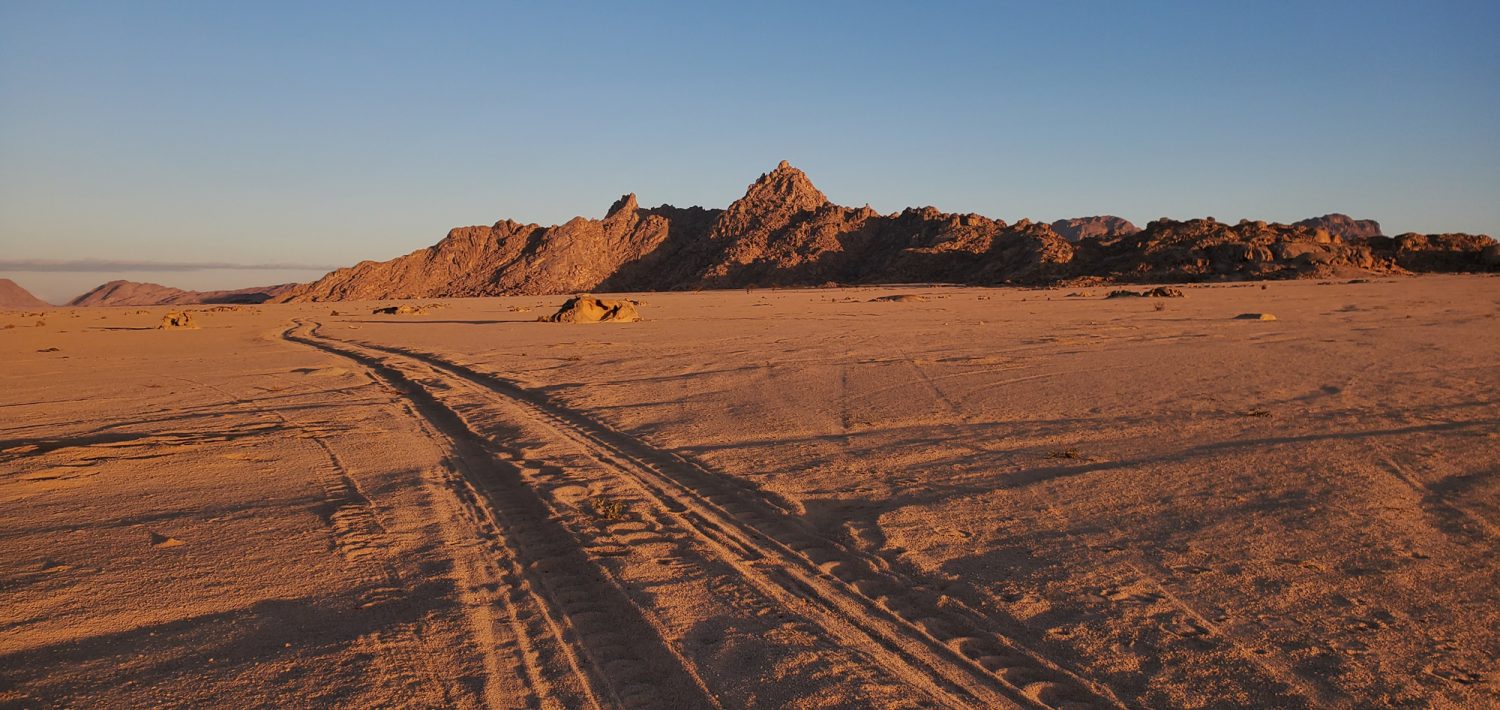
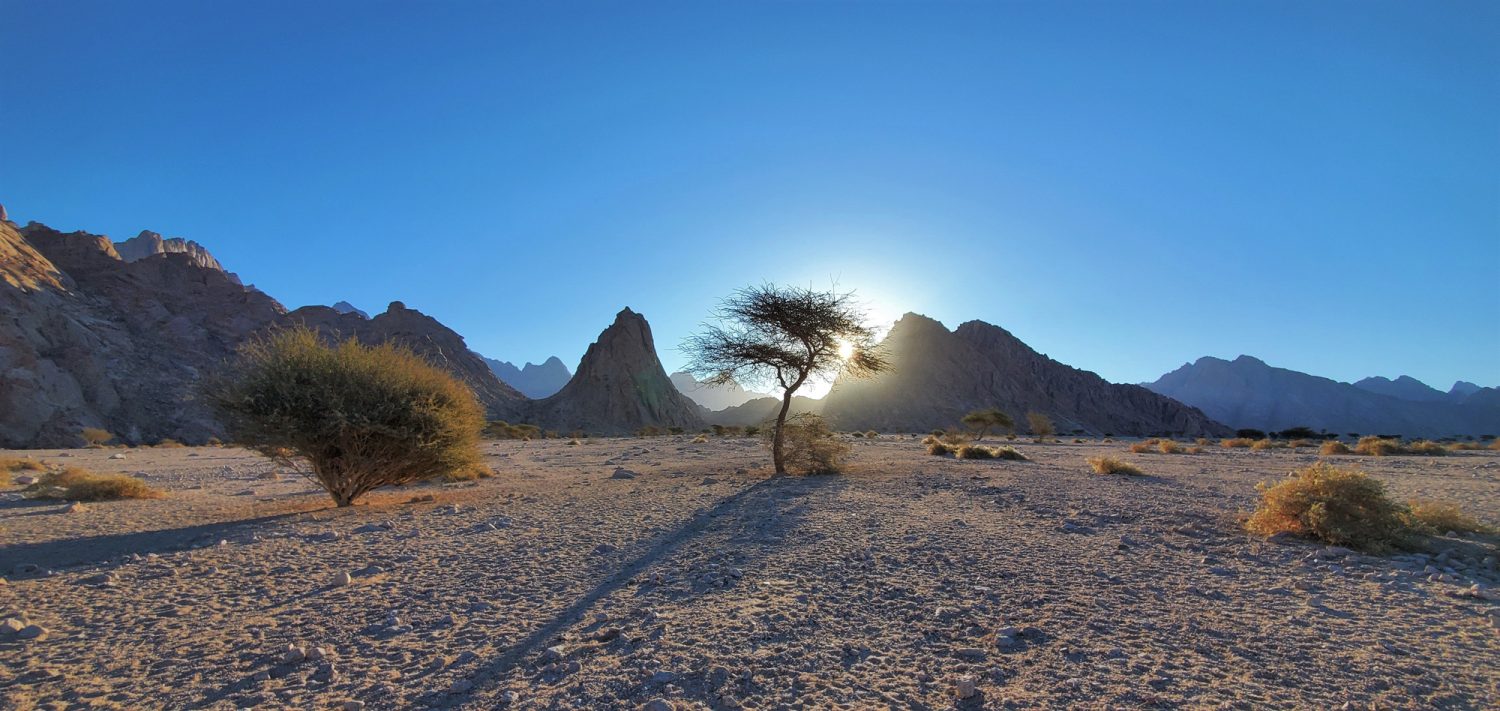
Saudi Arabia is a massive country—12th largest in the world with significant uninhabited areas. Obviously, this article is not going to cover the entire country, but we visited enough of it (following the rally will force a bit of that) that aside from the empty quarter, I feel like I have a decent sense of the landscape. There is a lot of sand in Saudi—dunes as far as the eye can see. But we also found decent beaches, incredible date palm forests, ancient Nabatean ruins, massive sandstone cliffs reminiscent of Zion, Canyonlands and Wadi Rum, and steep, rugged mountains. We’re currently discussing sending our own trucks over to Saudi for the 2021 rally and spending a month in-country. I doubt we’d cover more of the country, but rather get more intimately familiar with the areas we’d previously visited.
Cash is king. Cards are occasionally accepted and I’m sure that will get better as the Saudis open their doors to more visitors, but do your best to load up on riyals whenever possible. The country felt affordable bordering on cheap, outside of hotels where the prices were similar to the US.
Aside from a mid-trip shower when I cashed in some points for a Hilton in Tabuk, we camped. On arrival and departure days, we stayed in a hotel in Jeddah as well. Camping felt safe and was easily found. Food was cheaper than the US, whether at the grocery store or in a restaurant. Saudi’s love their fast food, especially fried chicken. It was tasty, and I don’t blame them. Don’t miss the chance to experience Al Ba’ik if you make the trip. We ate traditional lamb mandi and street food and never once wanted for more from the cuisine.
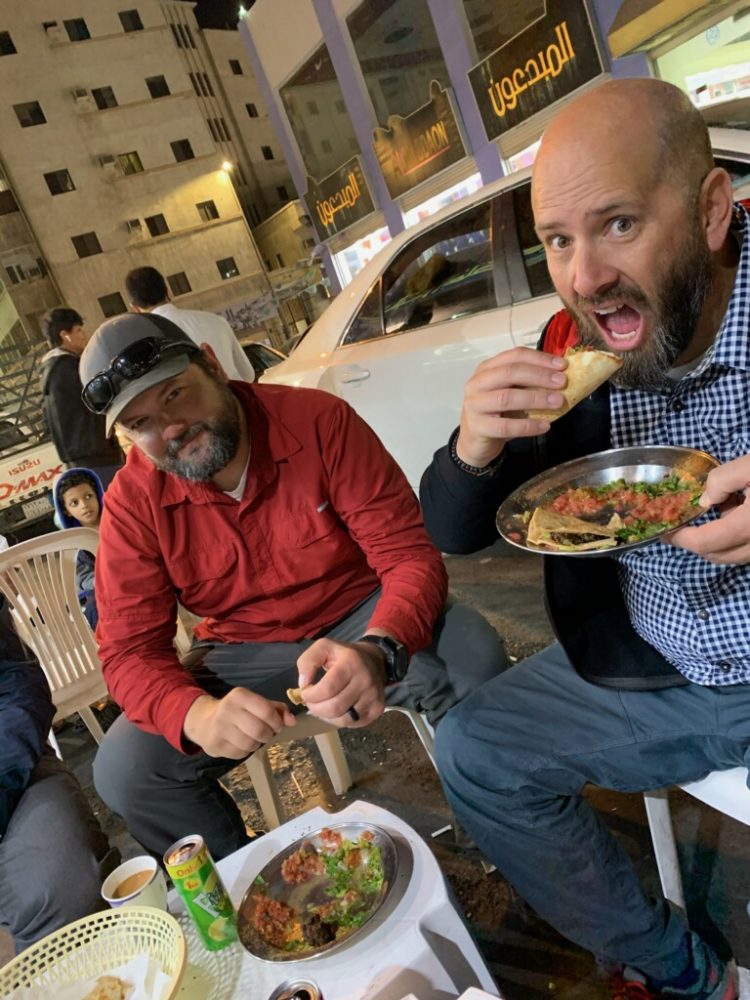
Cultural Accessibility
Whether it’s in your own backyard or a foreign country, it can be hard to get through the superficial layer of tourism and access the real, local culture. The beauty of overlanding is that it is the easiest way to get off the beaten path. While I primarily travel to experience nature, local culture is a close second. Simple ways to get beyond the tourism façade are going to movies and shopping malls in big cities, grocery shopping, and eating street food in smaller towns. When I mentioned earlier that the lack of infrastructure is a positive thing, this is why. Aside from a lot of people wanting to take pictures with us because they’d never met Americans before, we never felt any pressure from locals to pay for services, goods, tchotchkes, etc. Even in the most touristy areas we visited, we felt as if we were treated similarly to the locals. It’s a very refreshing feeling. Culture, however, is more than just being treated fairly.
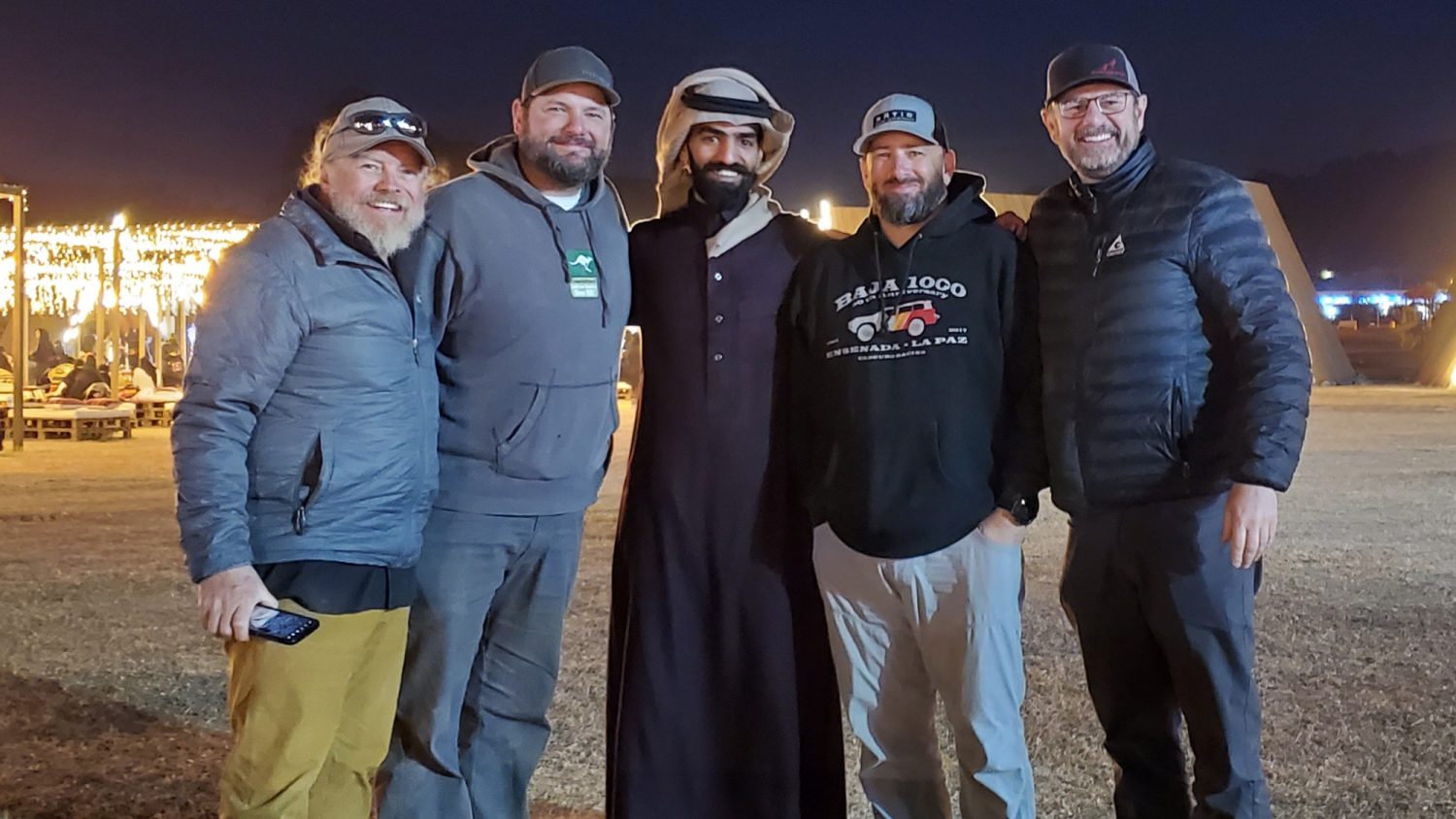
Muslim society can often be intimidating to Westerners. There are two cities in Saudi Arabia (Makkah and Medina) with over a million citizens that non-Muslims are not allowed to enter. The economy shuts down five times a day for prayer. Kurt was baffled by it every time. Having spent time in other countries heavily influenced by Islam, I find the call to prayer soothing and melodic. Although no longer required by law, there are still segregated restaurants (women and children eat apart from the men), and driving rights were just recently restored for women in Saudi. Two times we were locked inside restaurants during the evening prayer with local women and children, a strange phenomenon for sure. Drugs and alcohol are illegal in Saudi Arabia, although we heard rumors that the latter will be allowed in the near future. When getting your visa, you’ll attest that you won’t bring either into the country and also agree to adhere to a conservative dress code of pants and long sleeves. We saw quite a few people dress more casually, but we chose to respect the local customs. Despite all the restrictions, we found the people to be very open and willing to discuss their world, often in English.
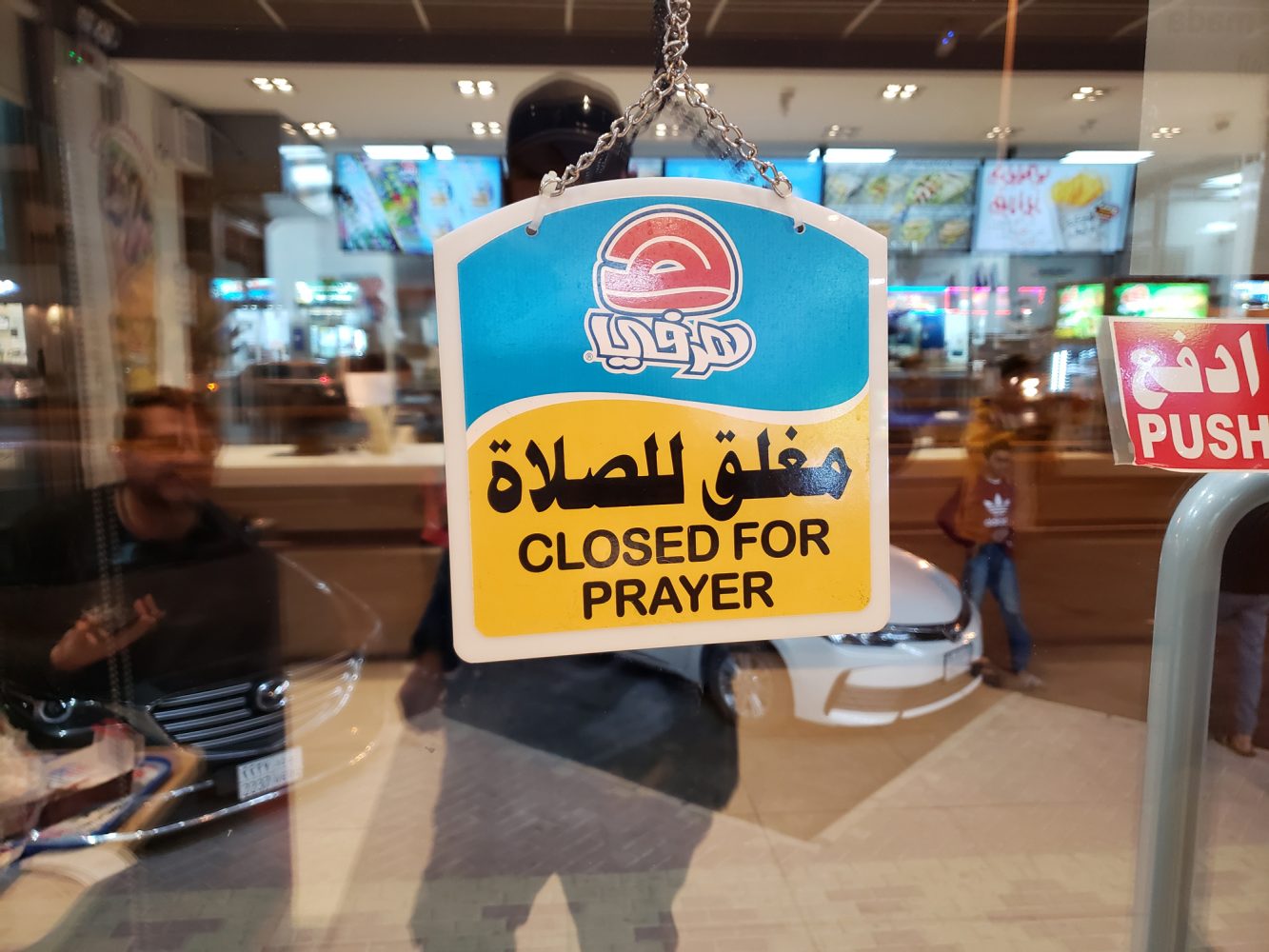
Photo: Kurt Williams
We were in the town Al-Ula, a damn near spitting image of Moab, Utah, during a celebration, full of crowds and concerts. Fortunately, the timing also meant we would be able to visit the Nabataean ruins of Hegra (Mada’in Saleh), which are currently closed to visitors while they protect and excavate them. In the local park, they set up food trucks, picnic tables, and coffee/tea stands. In a land known for their coffee, I found it curious that there was a very long line at the Dunkin Donuts trailer. Marc was a little excited about the prospect of getting some donuts and was making some off-color comments about how stoked he was. I kept reminding him that most of the people around us probably understood English and knew exactly what he was saying. He laughed, and we chose to discuss the donuts like adults. We got our order and sat at one of the nearby tables. Shortly after we sat down, one of the guys that was in line with us came over and said, “Yes, we all know exactly what you’re saying, and yes, their donuts are that good,” and let out a big belly laugh. He then sat with us for 15 minutes to discuss our visit so far; he introduced us to his family, and we talked about the festival that was going on.
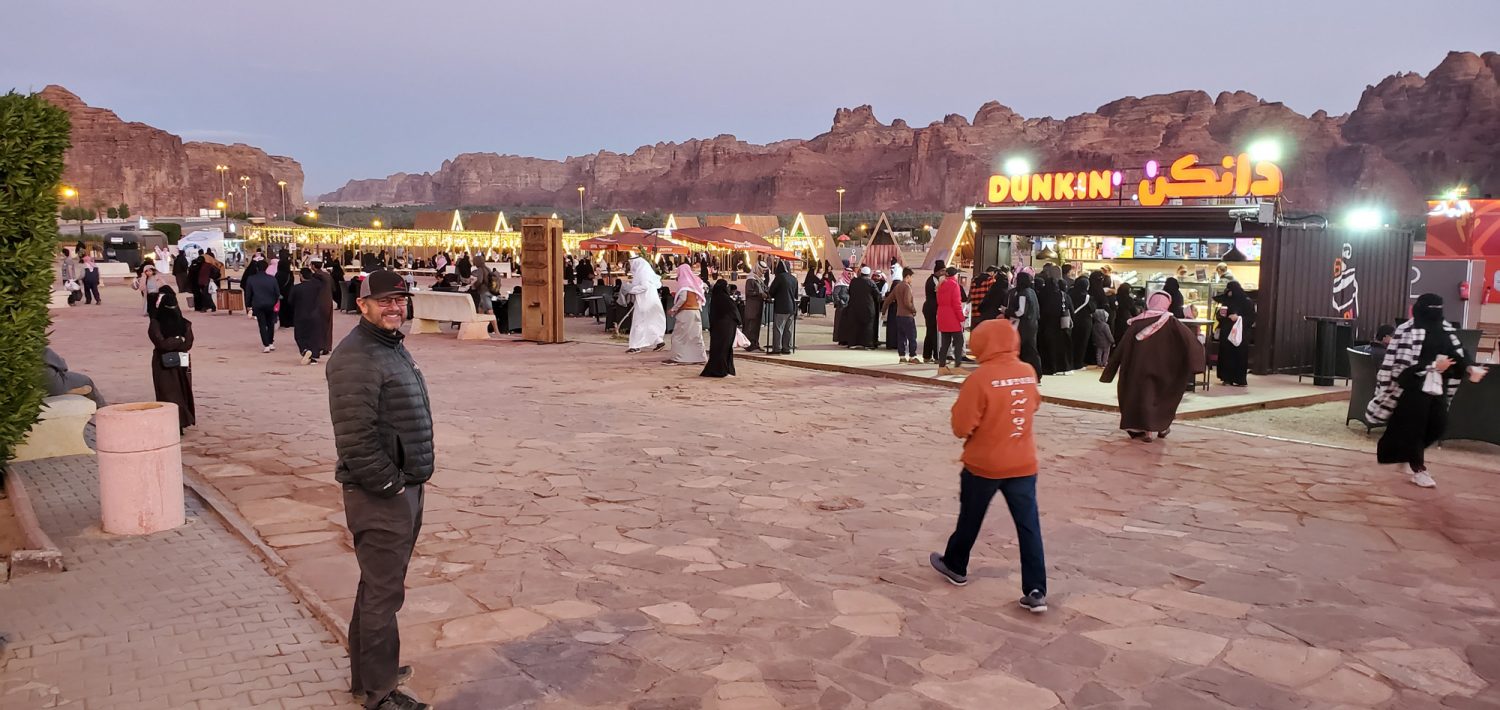
That same morning, we bought our tickets to Hegra, a newly established UNESCO World Heritage site, related to the far more famous Petra in Jordan, and had another fantastic exchange. The three young women selling tickets were dressed very differently—one in Western dress, one in a hijab, the other in a full burqa. After attempting to greet them in my non-existent Arabic, one joked and said, “You sound just like a Westerner,” which made everyone laugh. All three spoke great English, and while I was getting pronunciation lessons from one of the girls, Marc was discussing their observance of Islam with the other two. Specifics of that conversation aren’t important here, but what I learned from it is that the people were open to conversations deeper than those I had in Jordan or Morocco about the religious and cultural differences. I initially felt intimidated by the burqa and felt uncomfortable exchanging pleasantries with the women in Saudi. From that morning forward, it was far easier to engage. A few days later, in the city of Tabuk, I found myself chatting with some women in the candy section of the dollar store, and it was no different than similar chats I’d had with locals in candy sections in Mexico, Japan, Argentina, or South Carolina. Yes, I like candy. People are people, and a smile or a friendly greeting go a long way to eliminating fears and prejudices. At no point did we feel any antipathy or resistance to our visit. In most cases, we found the exact opposite and were greeted with a welcome and hello. Patience when there were language issues (our first night in Jeddah, we ate sheep because the guy didn’t know the word lamb), and as with most international travel, laughter and resignation do a world of good when reaching a communication impasse.
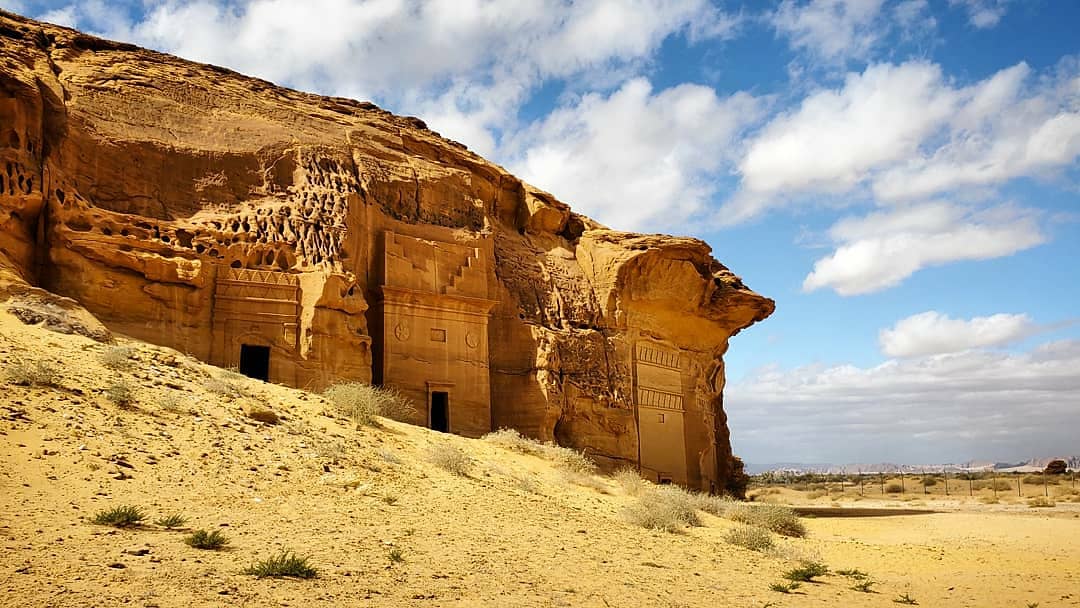
Surprises
- Imagine waking up next to a sandstone outcropping you found by moonlight the night before, only to discover it is covered in petroglyphs. In the Southwestern US, they’d be signed, parking-lotted, and fenced off. We slept right next to them to hide from the wind.
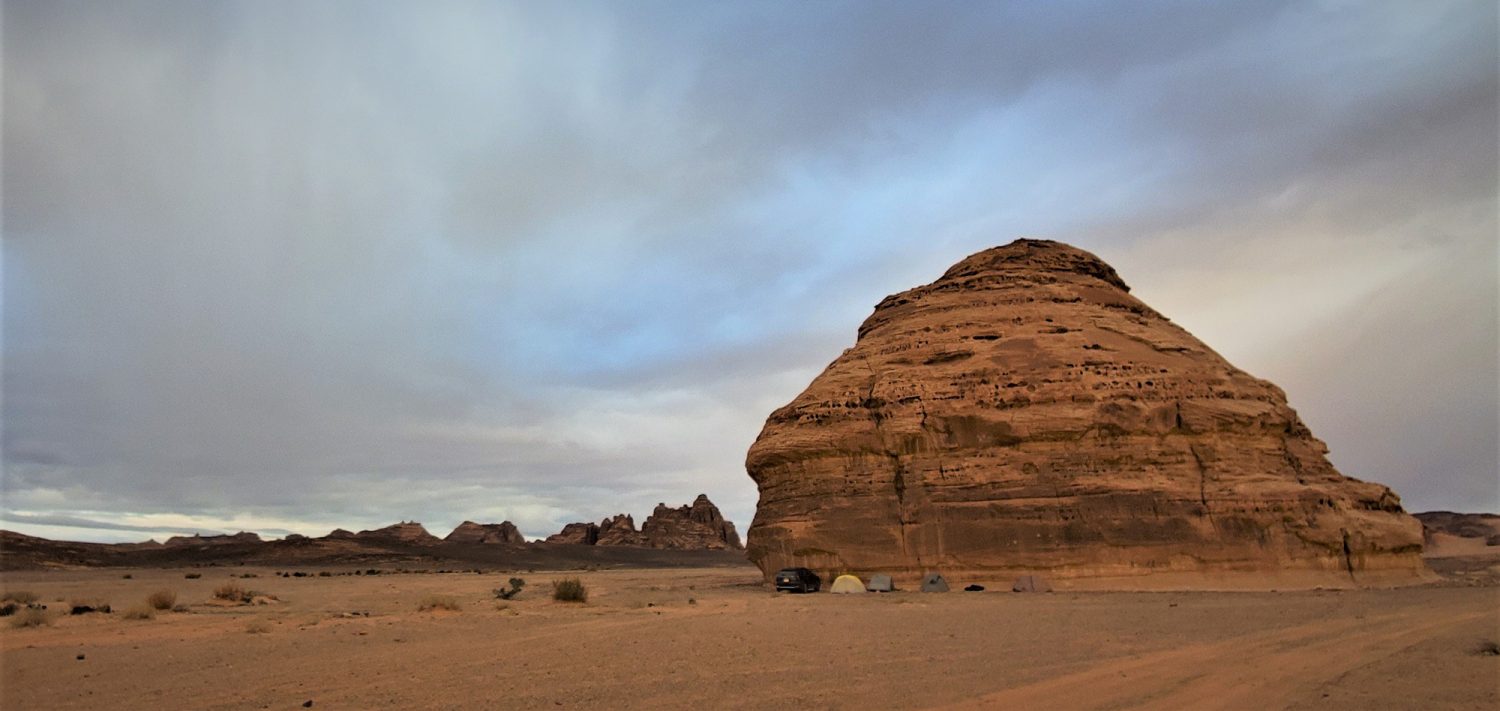
- Ever explore unrestored ruins of a 1,900-year-old city while traditional Bedouin songs are being sung outside the walls? Me neither, until I visited Al-Ula. Definitely one of the highlights for Kurt and myself.
- I can’t forget about Dakar. If you’ve never had a chance to see the big rigs at speed, you’re missing out. To hear them bombing through the dunes, surrounded by thousand-foot-tall sandstone canyons, is a special experience.
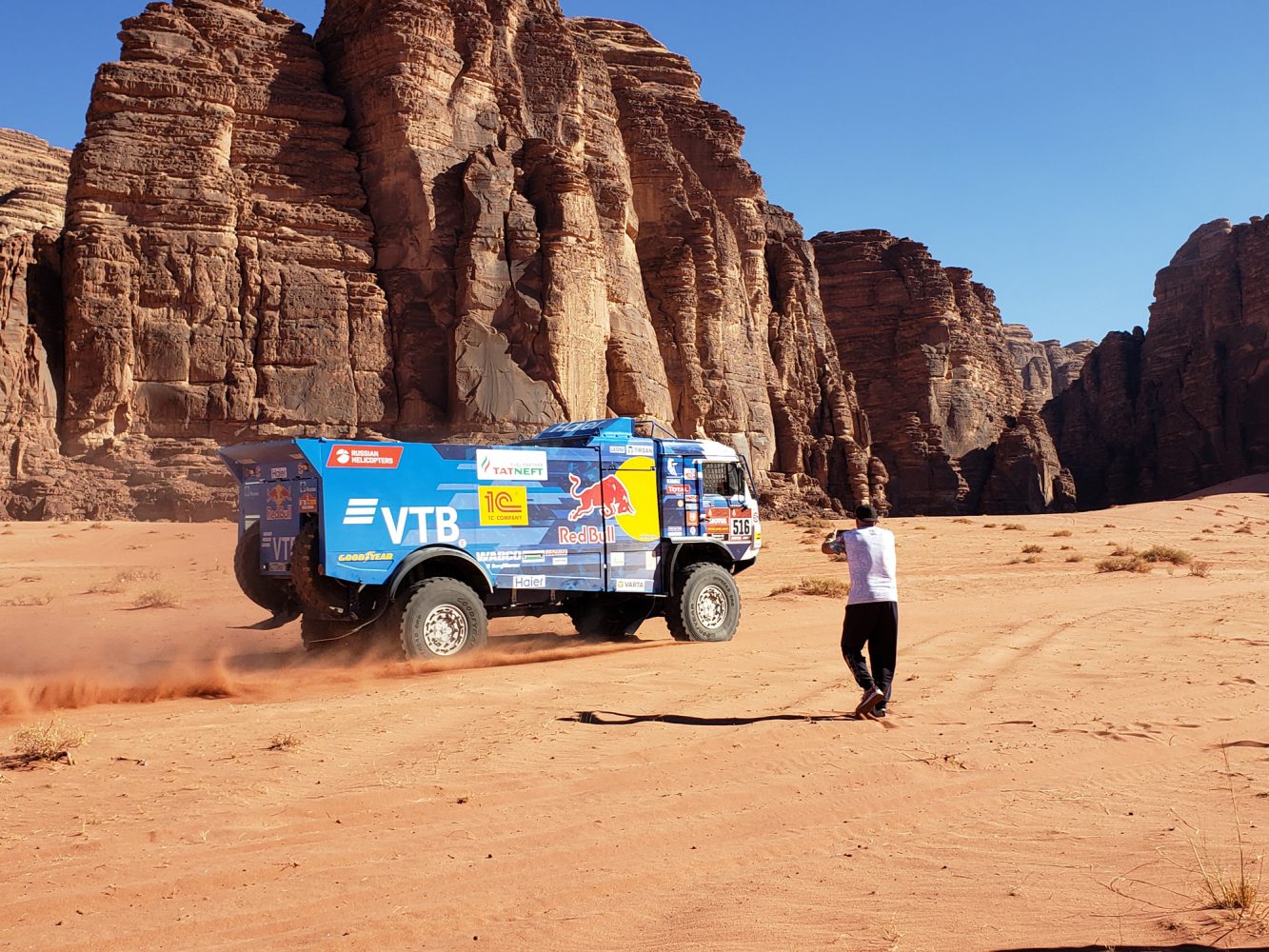

- Waking up to camels grazing outside your tent? That’s a new one too.
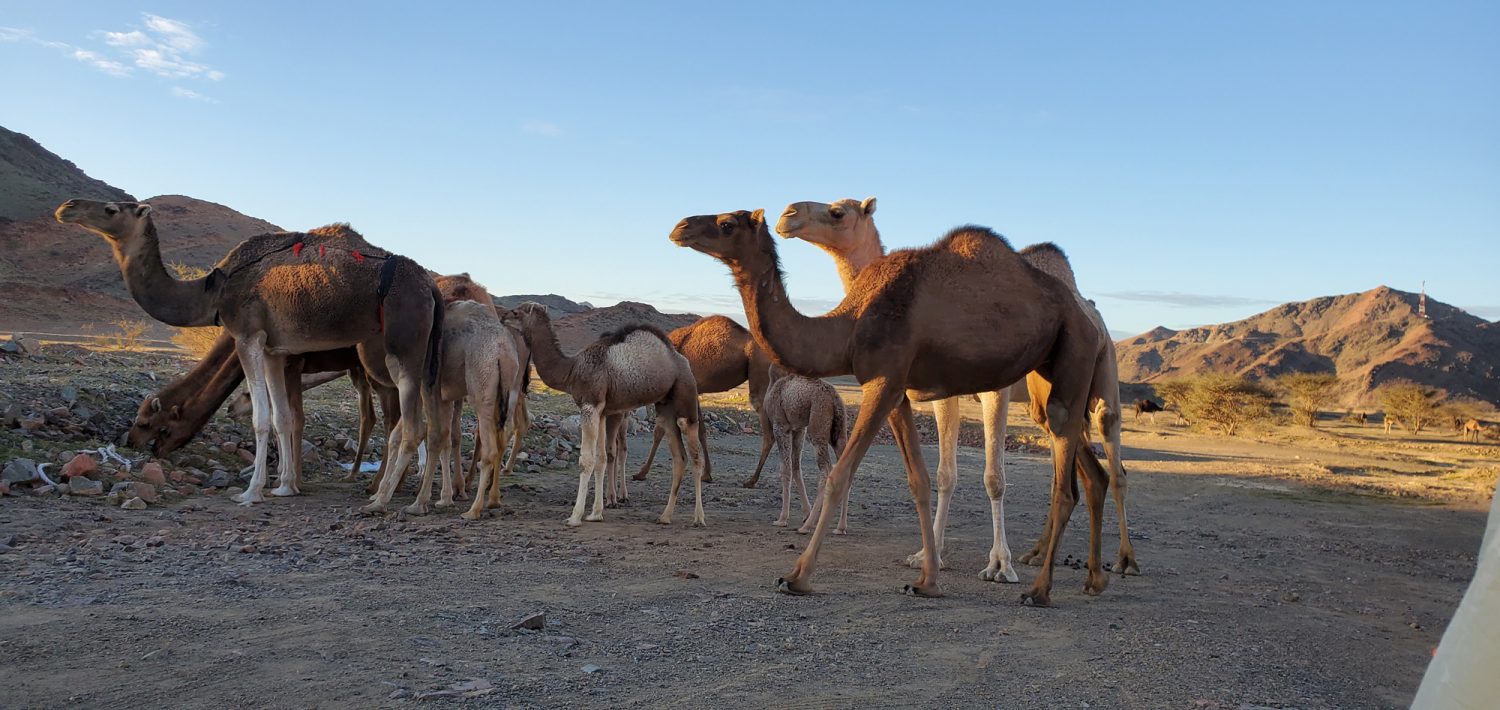
- An American, Ricky Brabec, winning the Dakar moto overall for the first time is a very special thing. Add Casey Curry taking home the UTV title as well. It was good to be a part of it. Saudi locals have yet to adopt Dakar as their own. In Peru, the racecourse is surrounded by thousands of locals each day. In Saudi, there were times we were the only spectators and access to the racers in some areas. I’m sure that will change.
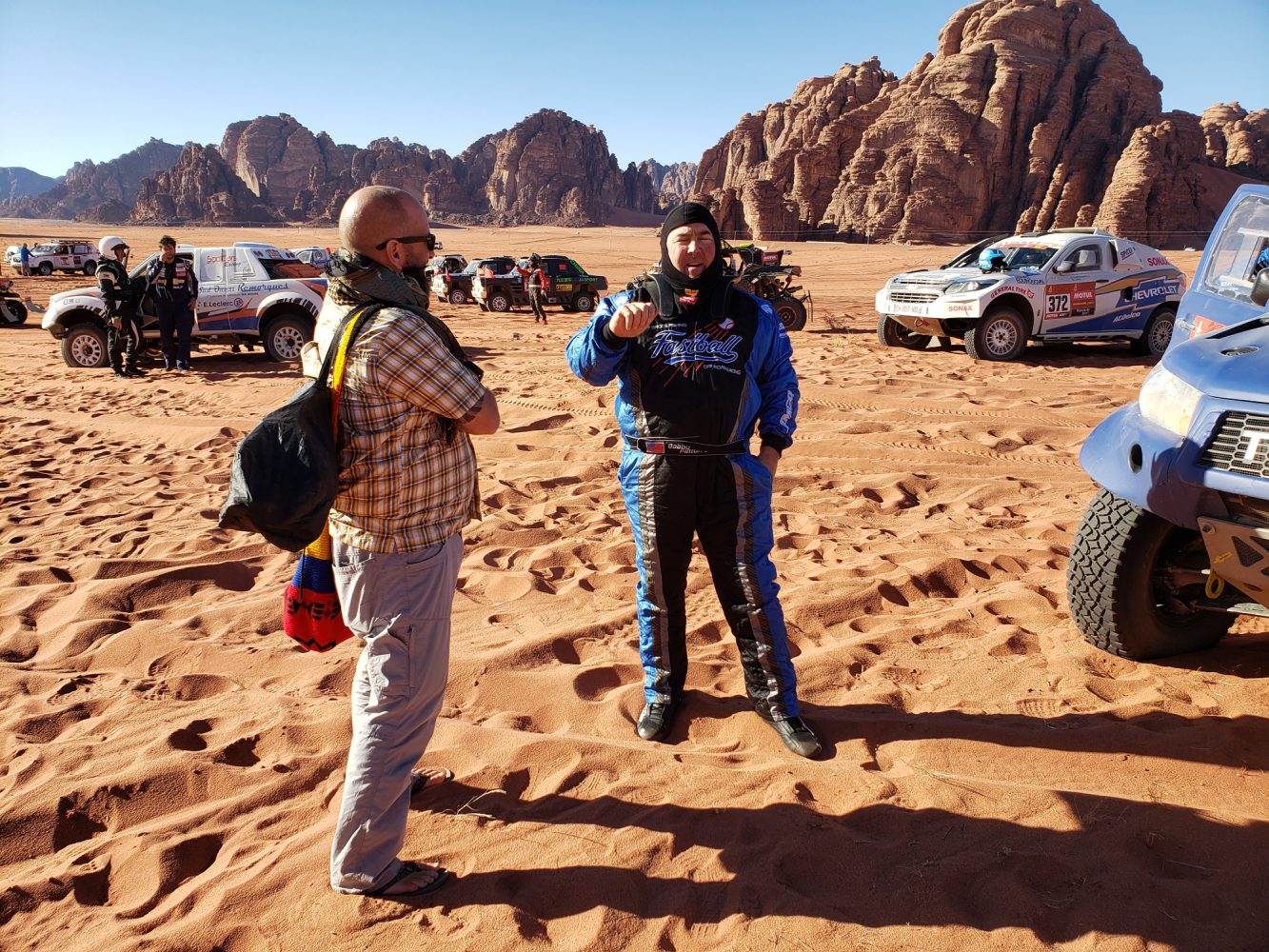 Photo: Kurt Williams
Photo: Kurt Williams
- The number of Land Cruisers in Saudi Arabia was astounding. Yeah, I’m one of those guys. So are Kurt, Marc, and Bryan. We race a Land Cruiser in Baja and have traveled dozens of countries in Land Cruisers. To visit a country like Saudi Arabia meant for lots of Cruiser spotting, junkyard exploration, and picture taking. We had dinner with one of Kurt’s customers from his business, Cruiser Outfitters.

Photo: Kurt Williams
- During one of our long travel days, we passed a remote military camp with missile launchers pointed to the sky, fully aware that Iran had just attacked an embassy in Iraq just a few hundred miles from our location. We also saw some RAF fighter jets running test patterns that day.
- The way they order fast food. I could spend 1,000 words explaining this, and I won’t. But trust me, it’s mind-blowing chaos.
Saying Yes
Whenever I’m on a panel or asked to present about my travels or overlanding, I always come back to the same message. You have to say yes to opportunity because there are only so many you get in life. And this takes us back to where we started, following a stranger into the dunes. How we got there is one of those situations that required the perfect set of circumstances and the right attitude, resulting in an experience that travelers dream of and strive to find.
Northeast Saudi Arabia is covered in dunes that run all the way into Iraq. Before our visit, I’d spent a lot of time on Google Earth exploring the country and hoped at some point to get into the dunes while we were there. An amazing trip would somehow feel incomplete without it.
We woke up Friday morning 30 miles east of Al-Ula (near the aforementioned petroglyphs) with some debate on what we wanted to do that day. We were flying out at 4:00 a.m. on Sunday and wanted some more time to shop the Jeddah souk before flying out. Jeddah was about 450 miles to the south. Kurt and I couldn’t shake the desire to visit the dunes, which were about 300 miles to the northeast. We rolled into Al-Ula for breakfast and fuel, and persuaded the others it was worth it. I agreed I’d do all the driving and would be fine doing so even if I had to drive until 3:00 a.m. if that’s what it took to get back to Jeddah in time. Kurt loaded up some podcasts, and off we went, toward the dunes, the Iraqi border, and 300 miles in the wrong direction from where we needed to be the next night. (If you’re curious about our destination click here).
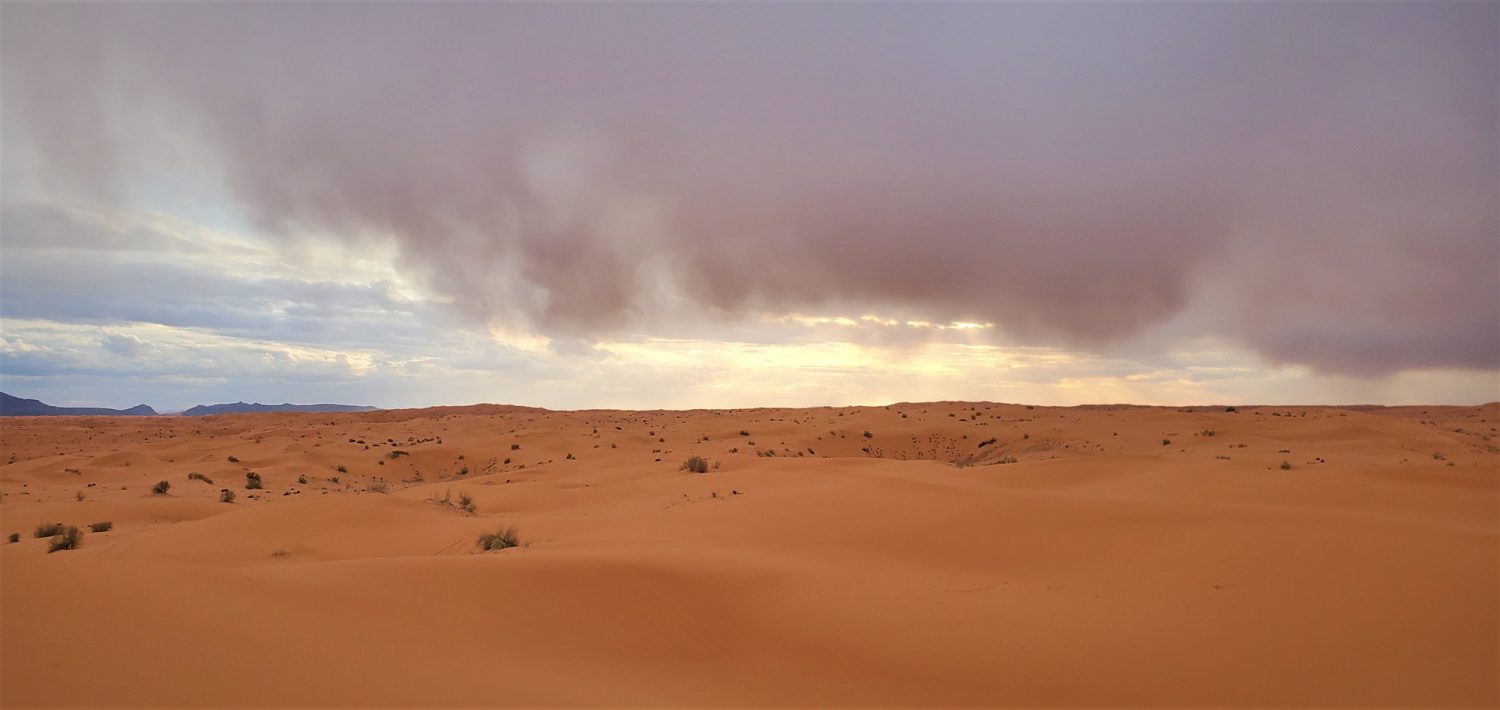
We settled into the road trip groove. People slept, I drove, we discussed the podcasts and soaked in the incredible desert landscape, noticing the decreasing amount of English signage on the roads and in the towns. We descended into the town of Al-Khita, got more fuel, and then out into the dunes about 90 minutes before sunset. There was nothing I wanted to experience more than a sunset over the ochre ocean of sand flowing out in front of me. Little did I know we would experience something even greater.
“Americans?”
“Yep.”
“Camels! Coffee! You Come!”
We were parked on the side of a remote road when Salim saw us taking pictures. He flipped his truck around and came back; with no more conversation than that, we followed him out into the dunes. He was a local camel herder (and a successful one at that based upon the $220k worth of Land Cruisers he owned) and welcomed us into his tent. We removed our shoes, and after entering the very traditional Arabian tent, he introduced us to his friend Abdullah. Over the next hour, we shared dates with sweet camel cream, tea, coffee, more tea, and lots of laughter and awkward conversation because of the language limitations. Salim owned 100 camels, including one that was six days old, and after Abdullah finished putting us all over his Snapchat, we went outside as the herd was brought in to feed. Salim was very proud and very welcoming. He lived in Al-Khita and only visited his herd at night, spending the entire day in the tent. They continued to provide us with food and drink. Marc couldn’t get enough of the boiling hot tea. With 800 miles to Jeddah and daylight diminishing, we said thank you and goodbye to our new friends, took some photos, Abdullah threw some more video on Snapchat, and I posted a video of him on Instagram. We climbed the dunes and for the first time during the trip, our CX-9 got stuck. With some liberal throttle and pushing, we got out, spent the last 20 minutes of daylight watching the sun sink into the endless dunes, and pointed our car south.
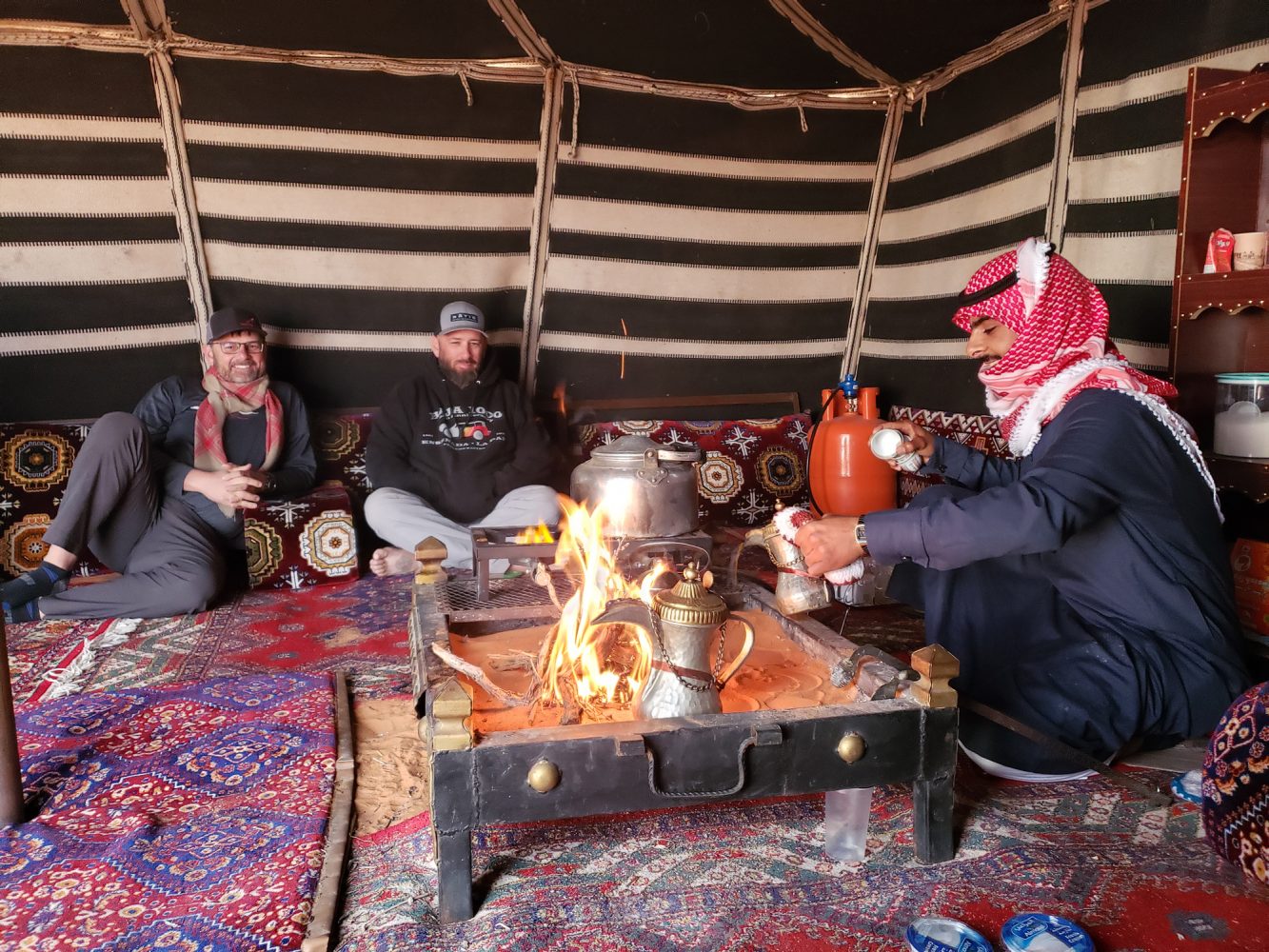
Photo: Kurt Williams

We woke the next morning to camels sniffing around our tents, returned to Jeddah, loaded up in the souk, and had our last meal at the street shop where we got our “sheep” the night we arrived. During the long drive down to Jeddah, there was a lot of discussion about Saudi Arabia, the potential for travel, what we’ll do differently the next time, and how unique and amazing the trip had been. Between the four of us, we’ve visited over 100 countries on six continents and were in awe of what Saudi Arabia has to offer to the adventurous traveler. You will not find spoon-fed experiences. At times it was difficult. If you don’t like the desert, you may want to look elsewhere, and, of course, there are ideological and political issues you’ll need to reconcile within yourself before making the trip.
This number sounds made up, but it’s confirmed that the royal family has committed a trillion dollars to move the kingdom’s economy away from oil by 2030, and tourism is a huge component of that goal. A year ago, had we been allowed in-country, we could have camped in Hegra. Now it requires a guided bus tour to visit. In the case of the 2,000-year-old ruins, that change is probably a good thing. However, those investments are both good and bad. It will make it easier to travel to Saudi Arabia but will also create that insulating layer between the visitor and local that so many other countries have created. The world is a big place, and I’m always seeking out new places. Revisiting a country is an exception for me. No doubt, I’ll be back in Saudi Arabia and, if I can work it out, more than once. Kurt, Marc, and Bryan share that same sentiment. If COVID-19 restrictions allow, we’ll be back again this January. It’s been a long time since I had such a complete, genuine, and authentic travel experience. Usually, that comes in moments or small doses and off the beaten path. Saudi Arabia offers those experiences in its entirety, and I can’t wait to do it again.


